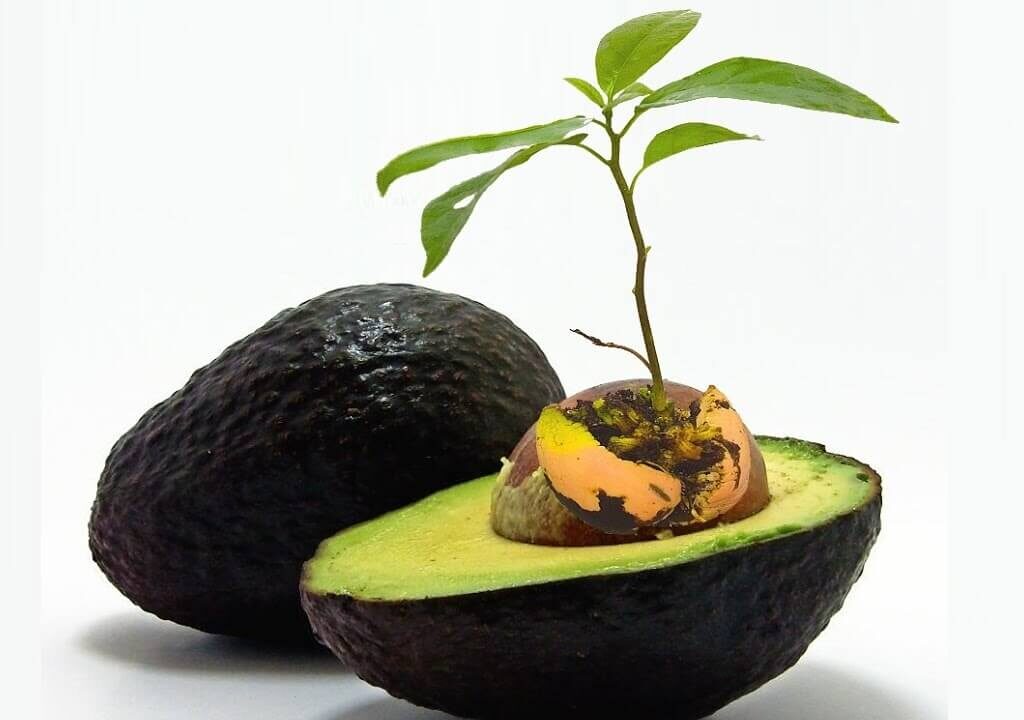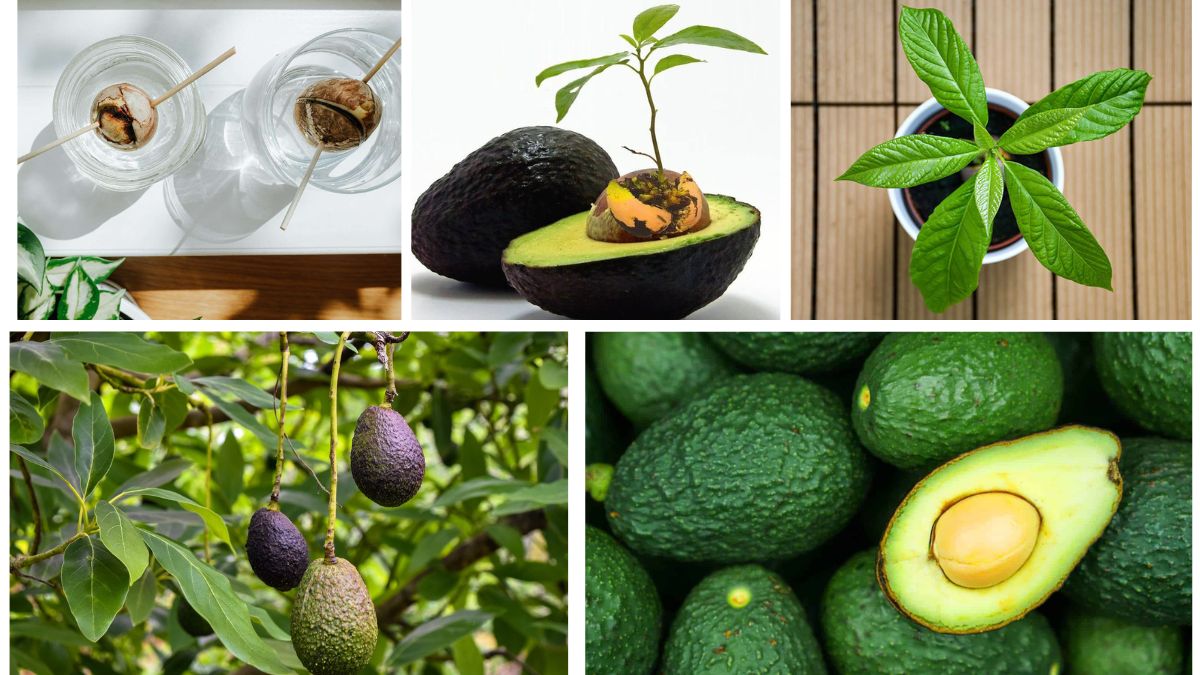Avocados are not only delicious and nutrient-rich but also a favorite for home gardeners looking to grow their own fruit. While avocado trees require patience to bear fruit, growing an avocado plant from a pit is a fun, educational, and rewarding project that can bring life and greenery to your home. This guide provides a comprehensive step-by-step process for growing an avocado pit into a healthy plant, perfect for beginners and plant enthusiasts alike.
Introduction to Growing Avocados

The avocado (Persea americana) is native to Central and South America and is prized for its creamy, healthy flesh. While commercial avocado trees are often grafted for faster fruiting, you can grow your own plant easily from the seed (pit). Although a homegrown plant may take several years to bear fruit, starting with a pit is an excellent way to observe plant development, learn propagation skills, and enjoy a beautiful indoor or outdoor ornamental plant.
Avocado plants thrive in bright, indirect light, and with proper care, can grow into sturdy houseplants or garden trees. The process of growing a plant from seed encourages patience and gives a deep sense of accomplishment when the first leaves emerge.
Step 1: Selecting and Preparing the Avocado Pit

The first step to success is choosing a healthy seed from a ripe avocado:
- Choose a ripe avocado – Look for fruit that yields slightly when pressed, indicating ripeness.
- Remove the pit carefully – Slice the fruit in half and gently remove the seed without cutting it.
- Clean the pit – Wash off all the fruit residue, being careful not to remove the brown skin of the seed.
- Inspect the seed – Discard seeds with cracks, mold, or damage. Healthy pits are plump and uniform in color.
Tip: You can start your avocado immediately or allow it to dry for a day to reduce the risk of rot.
Step 2: Choosing a Germination Method

Avocado seeds can be germinated using one of three main methods:
- Water Method (Most Popular)
- Soil Method
- Direct Planting Outdoors
Water Method (Popular for Observation)
This method allows you to watch the seed sprout and root development:
- Insert 3–4 toothpicks into the avocado pit’s midpoint, spaced evenly around the circumference.
- Suspend the pit over a glass of water with the broad end down (the pointy end should face up).
- Ensure the bottom half of the seed is submerged in water.
- Place in a warm, bright area with indirect sunlight.
- Change the water every 2–3 days to prevent bacterial growth.
- Roots and a sprout should appear in 2–6 weeks.
Soil Method
For those who prefer not to wait with water germination:
- Plant the cleaned pit in a small pot with well-draining potting soil.
- Bury the bottom half of the seed while keeping the top exposed.
- Water lightly and place the pot in a warm, bright location.
- Roots and shoots may emerge within 4–8 weeks.
Direct Outdoor Planting
- Suitable for tropical and warm climates.
- Plant the pit directly in a sunny garden spot with well-draining soil.
- Keep the area moist but not waterlogged.
- Protect the seed from pests and extreme weather.
Step 3: Caring for the Seedling

Once the pit sprouts, careful attention is needed to encourage healthy growth:
Light Requirements
- Avocado seedlings thrive in bright, indirect sunlight.
- Avoid harsh direct sunlight on young leaves, which can cause burns.
- Rotate the pot regularly to ensure even growth.
Watering
- Keep the soil consistently moist, but avoid waterlogging.
- In the water germination method, maintain the water level and clean the container frequently.
- As roots establish in soil, water deeply once or twice a week depending on indoor humidity and temperature.
Temperature and Humidity
- Ideal temperature: 65–85°F (18–29°C).
- Protect seedlings from drafts, cold weather, or sudden temperature changes.
- Indoor humidity is usually sufficient, but misting the leaves occasionally can promote healthy foliage.
Step 4: Transplanting the Seedling

Once the seedling has developed a strong root system and multiple leaves:
- Select a suitable pot – Use a pot with drainage holes and fill it with nutrient-rich, well-draining potting soil.
- Transplant carefully – Remove the seedling gently from water or initial soil, being cautious with roots.
- Plant depth – Bury the roots and lower portion of the stem in soil, leaving leaves above the soil line.
- Water immediately – Lightly water the soil to help the seedling adjust.
- Acclimate gradually – If moving outdoors, gradually introduce the plant to full sunlight over a week.
Step 5: Long-Term Care
Avocado plants require ongoing care to develop into strong, healthy trees:
Fertilization
- Feed seedlings with a balanced liquid fertilizer every 2–4 weeks during the growing season.
- Once established, use a fertilizer high in nitrogen to promote leaf growth, then switch to a phosphorus-rich fertilizer to support flowers and fruit development.
Pruning
- Trim damaged, yellow, or excessively long leaves to encourage bushier growth.
- Pinching back the top of the plant can stimulate branching.
Pest Management
- Monitor for pests such as spider mites, aphids, and scale insects.
- Use organic insecticidal soap or neem oil to control infestations.
Step 6: Flowering and Fruiting
- Avocado plants grown from seed may take 5–13 years to produce fruit.
- Indoor plants rarely bear fruit unless conditions mimic tropical environments.
- For outdoor plants in warm climates, flowering occurs once the tree reaches maturity, usually 3–4 years or longer.
- Pollination is necessary for fruiting; cross-pollination increases success.
Tip: Even if fruiting is unlikely indoors, avocado plants are still attractive, low-maintenance, and excellent for air purification.
Step 7: Propagation for More Plants
Avocado plants grown from seed can eventually be propagated:
- Cuttings – Take stem cuttings with at least 2–3 leaves and root them in water or soil.
- Grafting – Advanced gardeners may graft a seedling with a fruiting variety to reduce the time to fruit production.
This allows you to multiply plants for indoor greenery or gifts.
Common Problems and How to Solve Them
- Seed Rot – Often caused by too much water or poor drainage. Solution: Let seeds dry before planting and maintain proper water levels.
- Slow Growth – Common for young plants. Solution: Ensure adequate light, warmth, and regular fertilization.
- Yellowing Leaves – Caused by overwatering or nutrient deficiency. Solution: Reduce watering and fertilize appropriately.
- Leggy Seedlings – Occurs in low-light conditions. Solution: Move the plant to a brighter spot and rotate for even growth.
Benefits of Growing Your Own Avocado Plant
- Sustainable Gardening – Reduces reliance on store-bought fruits.
- Educational – Excellent for learning about seed germination and plant growth.
- Indoor Decoration – Adds a tropical touch and improves air quality.
- Potential Harvest – Long-term reward if conditions are favorable.
Even without fruiting, avocado plants bring vibrant greenery, architectural leaves, and a sense of accomplishment to any home or garden.
Conclusion
Growing an avocado pit into a healthy plant is a satisfying journey that combines patience, care, and observation. From selecting a ripe pit to nurturing a seedling and eventually transplanting it into a pot or garden, each step offers valuable learning experiences. With the right conditions—adequate light, well-draining soil, proper watering, and occasional fertilization—your avocado seed can grow into a strong, attractive plant.
Even if fruiting takes years, the process of watching a tiny seed develop roots, sprout leaves, and transform into a thriving plant is immensely rewarding. Start today, and you may soon have your own indoor tropical greenery—or even a fruiting avocado tree in the future.





